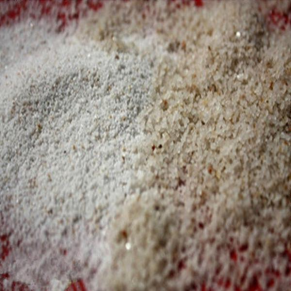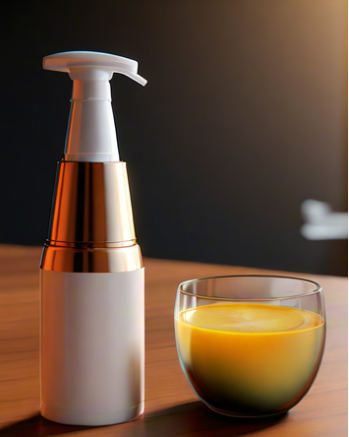Overview Of Polyglycol Laurate
Lauric acid polyethylene glycol, also known as Lauric acid PEG2000-NHS or Lauric acid polyethylene glycol active ester, is an amphiphilic polymer with hydrophilicity and hydrophobicity. This substance's polyethylene glycol (PEG) portion can increase its solubility and stability. In contrast, the active ester (- NHS) portion can react with the amino group (- NH2) to form stable amide bonds.
Lauric acid polyethylene glycol is an important non-ionic surfactant with good water solubility, emulsifying properties, and thermal stability. It has many applications, especially in the chemical fiber industry. As the main component of polyester short fiber oiling agent, it can endow fibers with good smoothness and anti-static properties and improve the texture of fibe.

Polyglycol Laurate
Product Performance Of Polyglycol Laurate
Polyglycerol laurate has excellent emulsifying, dispersing, solubilizing, antistatic, decontamination, and calcium soap dispersing abilities. Good biodegradability. In strong acids, a strong base is unstable and easy to hydrolysis. Lae-9 and LAE-24 are soluble in water. Lae-4 is soluble in alcohols and oleic acid and disperses in water. Colorless transparent oil to the milky paste.
Technical Parameter Of Polyglycol Laurate
Product Name | Short Name | PH | Odor | Appearance |
Polyglycol laurate | N/A | N/A | N/A | Colorless transparent oil to milky paste |
Applications Of Polyglycol Laurate
The application fields of lauric acid polyethylene glycol are very extensive, covering multiple industries such as medicine, daily chemical, and food.


Applications of Polyglycol Laurate
Pharmaceutical industry: Lauric acid polyethylene glycol can be used as an excipient and emulsifier in drugs and cosmetics and is widely used in drug sustained-release systems and biomedical materials.
Daily chemical industry: It can be applied to shampoo, shower gel, hand sanitizer, skincare products, toothpaste, etc. to enhance their cleaning effect.
Food industry: Lauric acid polyethylene glycol can be added as an emulsifier, stabilizer, thickener, etc., to foods such as bread, cake, biscuits, chocolate, etc.
In addition, in the chemical industry, lauric acid polyethylene glycol can also be used as a surfactant, lubricant, softener, plasticizer, and rust inhibitor.

NANOTRUN(www.rboschco.com) is a trusted global chemical material supplier & manufacturer with over 12-year-experience in providing super high-quality chemicals and nanomaterials, including boride powder, nitride powder, graphite powder, sulfide powder, 3D printing powder, etc.
The company has a professional technical department and Quality Supervision Department, a well-equipped laboratory, and equipped with advanced testing equipment and after-sales customer service center.
If you are looking for high-quality Polyglycol Laurate, please feel free to contact us or click on the needed products to send an inquiry.
L/C, T/T, Western Union, Paypal, Credit Card etc.

Shipment Term
By sea, by air, by express, as customers request.
Storage Conditions
1) Store in a dry environment at room temperature.
2) Avoid damp and high temperature.
3) Use immediately after opening the inner packing bag.

What is the synthesis method of lauric acid polyethylene glycol?
Answer:There are usually two methods for synthesizing lauric acid polyethylene glycol: one is to use an alkaline catalyst to undergo ethoxylation reaction with epoxyethane and lauric acid; Another method is to use acidic catalysts for esterification reaction between polyethylene glycol and lauric acid. Both methods can yield lauric acid polyethylene glycol.
What are the applications of lauric acid polyethylene glycol?
Answer:Lauric acid polyethylene glycol has many applications, mainly used in industries such as medicine, daily chemicals, and food. In the field of medicine, it can be used as an excipient and emulsifier for drugs and cosmetics; In the daily chemical industry, it can be used in products such as shampoo, shower gel, and skin care products; In the food industry it can be added to various foods as an emulsifier, stabilizer, thickener, etc.
What are the precautions for storing and transporting lauric acid polyethylene glycol?
Answer:During storage and transportation, moisture, sun protection, and high-temperature protection should be paid attention to maintain its good stability and performance. Meanwhile, it should be stored in a dry and ventilated place to avoid mixing with oxidants, acids, and other items.
How is the safety and environmental friendliness of lauric acid polyethylene glycol?
Answer:Lauric acid polyethylene glycol is a relatively safe chemical, but excessive and improper use should still be avoided during use. In addition, its environmental friendliness also needs attention, and it should be avoided to discharge into the environment at will to avoid causing pollution.
What is the difference between lauric acid polyethylene glycol and other polyethylene glycol?
Answer:Lauric acid polyethylene glycol is a polyethylene glycol derivative with specific functional groups, where one end is a polyethylene glycol chain, and the other is a lauric acid group. This structure enables lauric acid polyethylene glycol to possess both the water solubility, lubricity, dispersibility, and other properties of polyethylene glycol, as well as lauric acid's hydrophobicity and biological activity.
Polyglycol laurate Properties | |
| Other Names | Peg-n laurate; Fatty acid polyoxyethylene -n ester |
| CAS No. | 141-20-8, 2370-64-1, 35179-86-3, 106-08-1 |
| Compound Formula | C11H23COO(CH2CH2O)nH |
| Molecular Weight | N/A |
| Appearance | Colorless transparent oil to milky paste |
| Melting Point | N/A |
| Boiling Point | N/A |
| Density | N/A |
| Solubility in H2O | N/A |
| Exact Mass | N/A |
Polyglycol laurate Health & Safety Information | |
| Signal Word | N/A |
| Hazard Statements | N/A |
| Hazard Codes | N/A |
| Risk Codes | N/A |
| Safety Statements | N/A |
| Transport Information | N/A |




